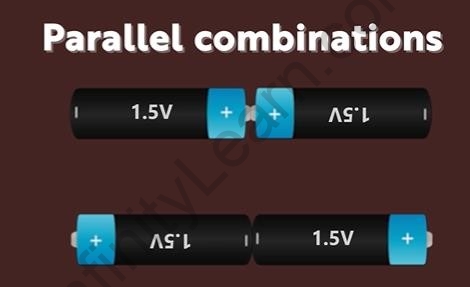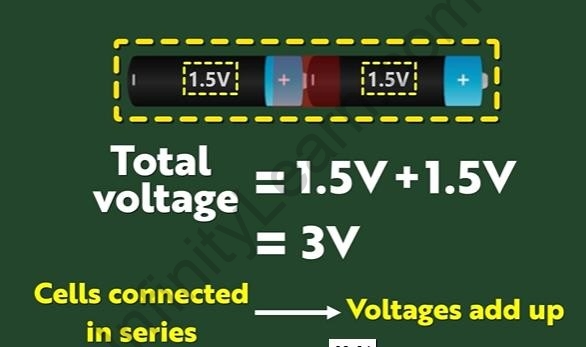Table of Contents
Table of Contents
- What is a Battery?
- Series Combination of Cells
- Parallel Combination of Cells
- Total Voltage: Series Combination of Cells
- Examples of Series Combinations of Cells
- Summary
- Did You Know?
- What’s Next?
In the last segment, we learnt how to draw circuit diagrams for a given electrical circuit. In this segment, we are going to learn about battery and series combination of cells.
What is a Battery?
A battery is simply a combination of two or more electric cells connected in a series or a parallel combination.
Series Combination of Cells
When two or more than two cells are connected to each other by using their opposite terminals then such combination is called a series combination.
In the given figure positive terminal of one cell is connected to the negative terminal of another cell. Thus, these cells are connected in series.

Series Combination of Cells
Parallel Combination of Cells
When two or more than two cells are connected to each other by using their same terminals then such combination is called a parallel combination.
In other words, if the positive terminal of the cells or negative terminals of the cells are connected together then the combination so formed is a parallel combination.

Parallel Combination of Cells
However, for now, we will discuss the series combination of cells only.
Total Voltage: Series Combination of Cells
When cells are connected in series then the total voltage of this combination will be equal to the sum of the individual voltages of the cells.
For instance, when two cells of 1.5-volt each are connected in series then the total voltage will be equal to the sum of these voltages, that is 3-volts.

Total Voltage of a Series Combination
Examples of Series Combinations of Cells







